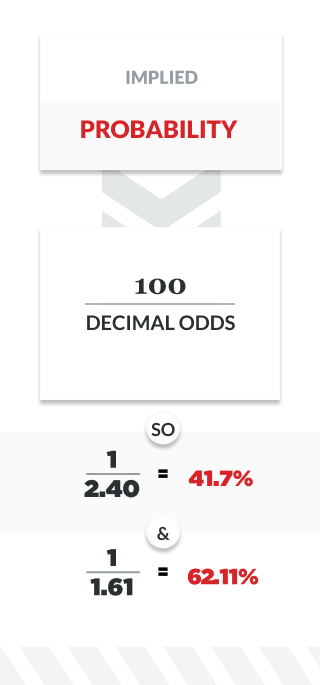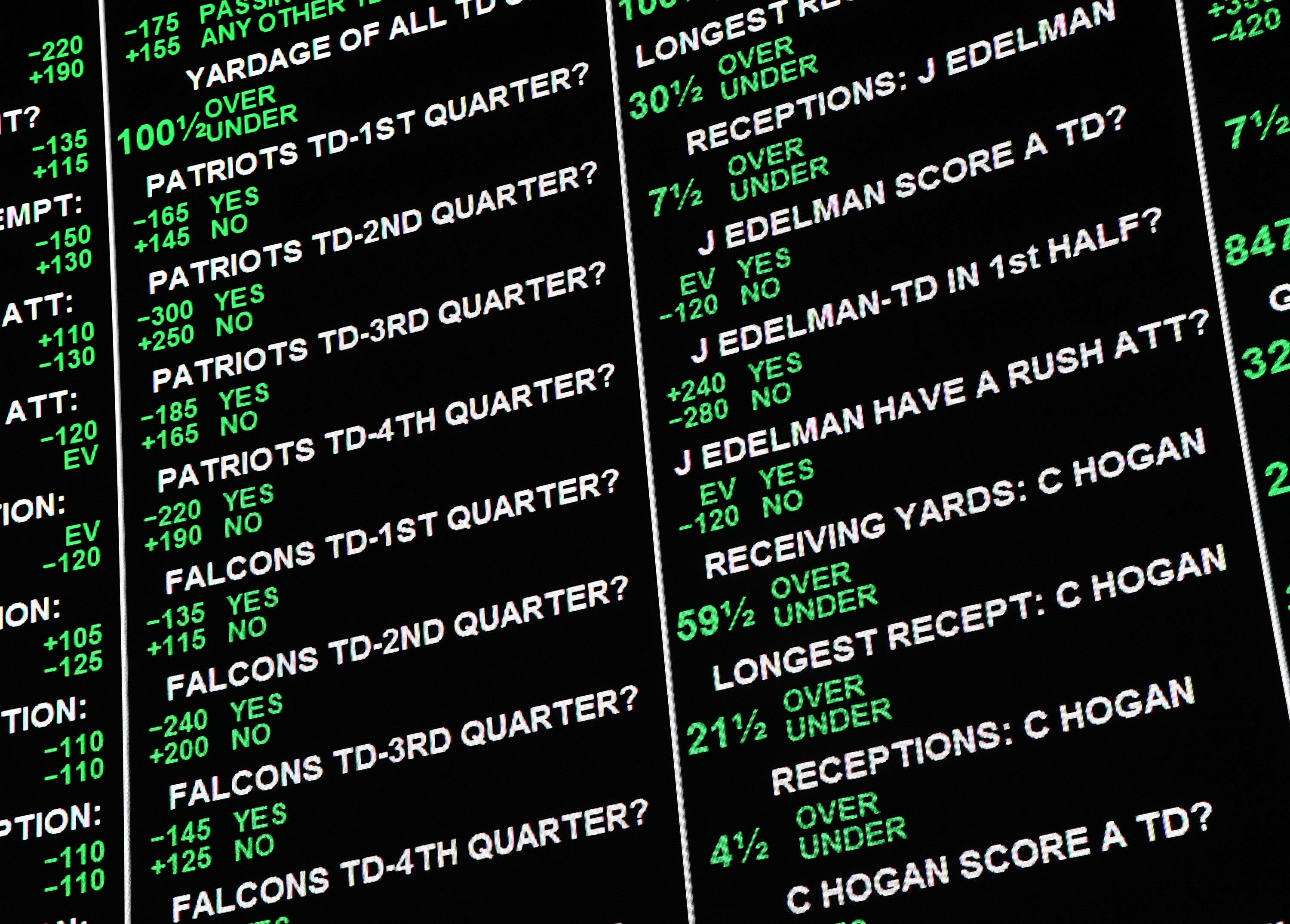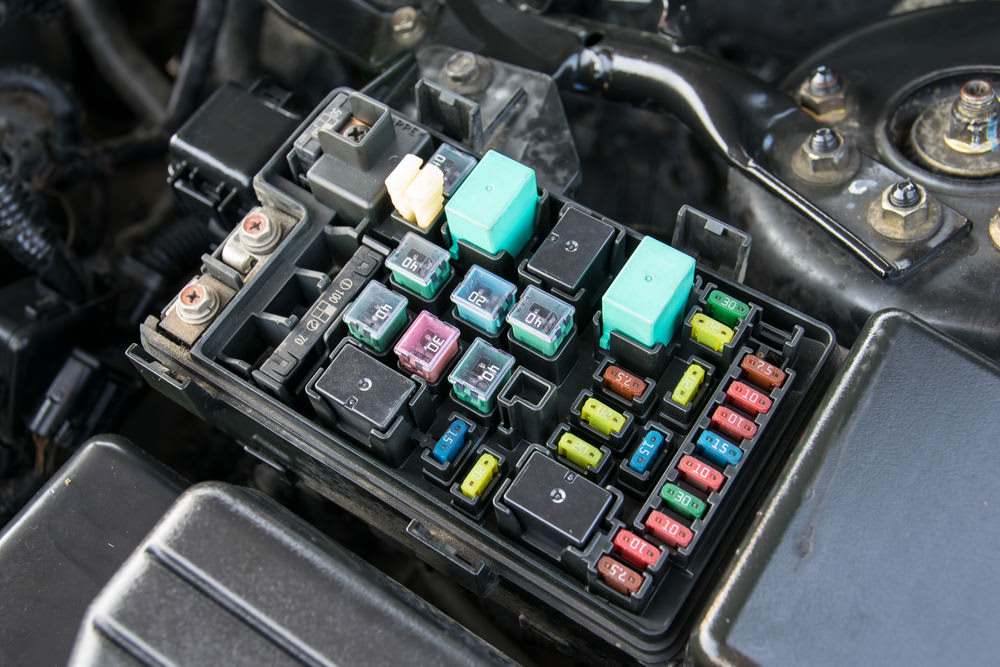What Does Plus 150 Mean In Betting
- NBA futures are basketball bets on long-running NBA events, like which team will win the NBA Championship and which team will win their conference. NBA futures odds are posted before the beginning of the regular season, and are updated based on scores, injuries, and a whack-load of other factors until the season’s final buzzer sounds.
- For example, odds of 1.75 mean that if you bet $1 and the bet wins, you'll get $1.75 – $0.75 profit plus your $1 original stake. Positive odds are displayed with a (+) and show the potential winnings on a $100 bet, while negative odds are shown with a (-) show the amount you’d need to bet in order to win $100.
- When you see a plus sign in front of a number (like +150 for example) it tells you which team is the underdog. You get a higher payout betting on the underdog since they’re less likely to win. The team with the plus sign (like +150) is the underdog. The number tells.
- With money lines, remember that plus signs mean underdogs and minus signs mean favorites. North Carolina is an underdog at +135 and since they are the underdog, you make more than you bet if they win. A bet on North Carolina would pay $135 for every $100 you bet. When betting on favorites to simply win, you won’t be getting as much as you bet.
Getting action on a game can add a thrill factor that is hard to find in any other aspect of life. Making some money while doing it, well, it doesn’t get much better than that. But what happens when you jump onto your favorite sportsbook and they bombard you with a series of numbers (odds) which are meant to represent the chances of your team winning, when all it really looks like is math on steroids!
If this is how you feel when your trying to place a wager, read on. The following is a simple guide on how to read sports odds and give yourself the best chance of taking home some cash.
What does +200 mean? +200 is a specific set of odds attached to a given sports event. These are in the form of ‘American’ odds’. The +200 represents the amount a bettor would win if they had wagered $100. A profit of $200 and a total payout of $300. Other types of odds are Decimal and Fractional.
Plus, I’m fairly certain most of Kansas City’s attention on defense will, as usual, be focused on slowing down Tampa Bay’s dangerous weapons on the outside. I like this up to -150 — and you can get it at -138 at FanDuel as of Thursday night (find the best real-time line). My podcast co-host Chris Raybon, who has much more props.
What Types of Odds Do Sportsbooks Use?

Globally sportsbooks use one of three types of odds:
What Does Mean In Sports Betting 3
- American
- Fractional
- Decimal
There are positives and negatives in the use of all of them. One thing is for sure, if you are going to bet on sport, you will run into one of these odds formats and you NEED to know how to read, understand and eventually capitalise on them.
This article will focus heavily on American odds.
How to Read American Odds
The basis of American odds is that they reflect two different aspects to the bet:
- in the case of the underdog: how much money a gambler will win if they bet $100,
- in the case of the favorite: how much a gambler needs to bet to win $100.
Quite a big difference between the two, and definitely a little tricky to navigate at first.
The following is an example of the moneyline market using American Odds, which was offered by a sportsbook during the NBA playoffs
Note:As the Portland Trail Blazers are the home team they are listed second in this market. Interestingly in many international or offshore sports the home team is listed first. Perhaps in this case the home court advantage is what has led the sports books to install the Trail Blazers as the favoured team.
We can tell Portland has favoritism as the odds have a minus sign at the front. Any time a team has minus sign out front, the bettor knows they will be receiving less than a 2 – 1 payout figure. In fact in this case, to win $100 wagering on the Trail Blazers you would need to stake $128.
In this particular example, the Oklahoma City Thunder are the outsider or underdog as they have odds with a plus sign at the front (plus money). This means if you bet $100 on OKC then you would collect $105 profit, a total return of $205.
Clearly the bookmakers considered the game to be potentially close and therefore odds were reasonably tight. As it turned out the Trailblazers dominated the second half and ran out convincing winners 114 – 92. Moneyline bettors who took Portland, go to bed with a tidy profit. In actual fact the margin of victory is irrelevant as the Moneyline requires just one condition be met, a win.
How to Do the American Odds Math?
Despite the American odds looking confusing at first sight, the underlying math is not too difficult. Having said that it could be much more user friendly.
Another key point to remember is that American odds do not include the original stake in the calculation. They only reflect the profit from the wager. The original stake needs to be added to reflect the total payout or total return figure.
Referring back to the previous example the following math applies:
The issue with this way of reporting odds is that the bettor has to do more than one level of calculation themselves. While it’s all fairly straightforward it does affect the user experience negatively.
How are American Odds Different to Decimal Odds?
The decimal odds system, which is being increasingly used by sports bookmakers across the globe, removes the extra step of calculation required by the bettor when American Odds are in use. It is a much simpler method to offer odds on the identical market and immediately gives a total return or payout figure by using one simple multiplication.
The NBA example used earlier in the article using decimal odds would read as follows:
The payout calculation is where the ease of decimal odds is highlighted:

Underdog:
Favorite:
It is clear that the decimal method is a much simpler way for sport bettors to calculate their potential winnings than than the American odds system.
Another downside to using American odds is that they are almost unusable when working with parlay betting. A parlay or multiplier is where a bettor takes classic bet types and parlays several of these into one wager. In order to multiply the individual odds to create the parlay payout figure, the moneyline is first converted to decimal odds. Highlighting the extra step of math sportsbooks require bettors to do when they solely offer odds in the American format.
It is hoped that one day soon most sports books will offer decimal odds instead of American odds. As legalized sports betting explodes in popularity across the US and more mobile sports betting platforms come online, it is hoped that at the very least, functionality to switch between types of odds is added to all betting apps. After all, sports betting is about entertainment, and user experience should be the number one focus from all corporate bookmakers.
How to Identify Sportsbook’s Margin When Using American Odds
Sportsbooks clearly need to make money to continue to operate and therefore it is understandable that they will take a cut along the way. Understanding when that cut is too large is critical in giving yourself the best chance of turning a profit.
When dealing with American odds on 50/50 markets like total points or point spread the margin is quite simple to recognise.

For example the market on an NBA game may be offering an over/under points total of +/-214.5 points.
In this market, without any bookmaker edge, the odds would read +100 for each option. That is a doubling of the bettors money based on the market essentially being a coin flip. $100 invested would return a profit of $100. Clearly this is not the case in reality. If you spot a market like this through a sportsbook promotion (a rare occasion), then load up!
The sportsbook is only offering -110 meaning a bettor would need to invest $110 to return a profit of $100. This equates to approximately a 4.5% margin (vig) for the book. To be profitable long term the bettor would have to correctly pick this market 53% of the time. A tall order.
Some books will offer a smaller vig, for example -108 but others will be less generous and wind their margin out to numbers like -112. These numbers are often seen in live betting markets due to the greater perceived risk the sportsbook take on with live markets.
It is best, as a rule, to avoid markets where the market is skewed too far in the favor of the book.
Looking for More?
Check out our YouTube Channel! Get a ton more videos like the one below:
The Game Starts Now
Before you hit the confirm bet button on your mobile sportsbook make sure you are fully aware of what price you are actually buying. While American Odds can at times be confusing there is still an art to spotting and cashing in on value. Best of luck!
Good Luck and as always, gamble responsibly!
As a fan, you don’t care if your team wins by a point or 100. A win is a win, though that 100-point win would be a little easier on the nerves.
In sports betting, how much a team wins by is usually all that matters.
The most popular way to bet for the two most popular sports, basketball and football, is with the point spread, also known as the “side.” Most baseball, hockey and soccer bets are on the moneyline, which is betting on a team to win straight up with adjusted odds. Football and basketball have moneyline bets available too, but most people will take the point spread.
The concept can be a bit confusing if you’ve never dabbled in sports betting before.
What Does 130 Mean In Betting
Why bet with the point spread?
The point spread was created to attract more action on a game. When the San Francisco 49ers are expected to blow out the Arizona Cardinals, it’s not enticing to lay $300 to win $100 on a moneyline. But when the 49ers are 11-point favorites and each side is -110 odds? That’s much easier.

In that example, the 49ers are spotting the Cardinals 11 points before the game starts, at least for bettors. The 49ers have to win by 12 or more points to cover the spread. If the Cardinals win or lose by 10 or less, that side wins the bet. If the game lands on 11, like a 21-10 49ers win, it’s a push and all bets are refunded. If you see a -11 that means that team is favored, and +11 means you’re taking the underdog.
Nothing sharpens your math skills better than trying to figure out how big your lead as a bettor is if you have a 22.5-point basketball underdog that is losing 90-72.
The problem with the point spread can be when a team — which really doesn’t care that you bet the favorite at -11 — has a 14-point lead but gives up a meaningless score at the end to win by only seven points. They’re still happy with the win. You, as a bettor, are not.
© Provided by Yahoo! Sports Sportsbooks have large boards that display point spreads for all games that day. (AP Photo/John Locher, File)Point spreads lead to bad beats
The most infamous example of a bad beat with the point spread probably came in the 2004 Final Four at the NCAA men’s basketball tournament.
What Does Plus 100 Mean In Betting
Duke was a 2.5-point underdog against UConn. The Huskies rallied late and took a 79-75 lead on a free throw with 3.2 seconds left. The game itself was over; Duke couldn’t score twice in a few seconds. But Duke guard Chris Duhon pulled up for a running 3-pointer just over the half-court line and banked it in at the buzzer. Duke lost 79-78, but bettors who had Duke and 2.5 points won. March Madness is a huge event for bettors, and reports at the time estimated that Duhon’s “meaningless” shot resulted in a $30 or $40 million swing in Nevada. UConn players celebrated at the final buzzer. UConn bettors doubled over in pain. That’s the difference between betting the moneyline and the point spread.
Baseball and hockey have point spreads too, the “run line” in baseball and “puck line” in hockey. It’s generally 1.5 with odds adjusting accordingly. Taking a big baseball favorite at -1.5 runs can make the odds more palatable. Of course, betting the New York Yankees at -1.5 to bring down the odds from -190 to -110 isn’t too fun when they win 4-3 and you don’t cash a bet.
What Does Plus 150 Mean In Betting Terms
Betting on the point spread is the most common way to wager on sports. And the first time you take a favorite that wins the game but doesn’t cover the spread, you’ll understand every bettor’s heartbreak.